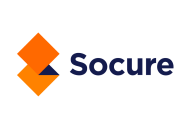Ghost students are not real learners — they’re a form of third-party fraud designed to exploit financial aid systems. These fake students are created using stolen identities. They attend virtual classes and complete assignments using artificial intelligence (AI). On paper, they are fully enrolled and eligible for financial aid.
In 2024 alone, nearly one in three California community college “applicants” were fake.2 These fictitious enrollments, driven by fraudsters exploiting outdated online application systems and weak identity verification, pose a significant threat to both educational institutions and the students they serve.
The problem is poised to grow because attackers can now use AI and stolen personal information to rapidly create believable fake identities, says Brian Cohen, vice president of the Center for Digital Education. “AI is making it easier,” he says. “If you don’t nip it in the bud early, it can escalate exponentially.”
Targeting Community Colleges
Many ghost student attacks target community colleges, which often have simpler digital applications, lower admissions requirements, an abundance of online classes and generous aid programs. Community colleges embrace an open enrollment model rooted in access and opportunity — serving immigrants, first-generation Americans and working adults seeking new skills.
While mandatory application fees or burdensome identity verification requirements might deter bad actors, they also risk excluding the students community colleges are designed to serve. Striking the right balance means deploying smart, low-friction identity tools that stop fraud without creating new barriers to education. The goal is to ensure aid and opportunity reach real students — not synthetic identities created by fraudsters using stolen personal information and account credentials.
Common objectives for ghost student attacks include:
- Committing financial fraud: Perpetrators create fake student profiles to receive financial aid or tuition refunds.
- Accessing intellectual property: Fraudsters enroll in courses to gain access to valuable academic content and resources, which can be exploited for commercial benefit or other nefarious purposes.
- Securing an education email address: Some attackers seek a .edu email address to access software discounts, services and other digital goods intended for real students. These addresses can also be used to open bank accounts, apply for government benefits or manipulate digital platforms that prioritize educational users.
The impact on community colleges is especially concerning, given the vital role they play in the economy. These institutions are effective, affordable and essential to workforce development, often serving as a bridge to career advancement for nontraditional students. Community colleges also fill skills gaps in the job market by helping students gain experience and certifications that can lead to employment.
As these institutions implement automated technology to service financial aid, the risks become even greater. Security must be at the forefront of every transaction.
By combining policy willpower with advanced technology that works, California’s community colleges can lead the way in protecting public funds and restoring trust.
The Role of Identity Verification
Weak identity verification in financial aid application processes is a critical vulnerability. Ghost student attacks across multiple college systems often originate from the same sophisticated fraud rings, according to a recent analysis by Socure.3 Online student application platforms where identity checks are optional instead of mandatory are especially vulnerable. The lack of security lets fraudsters manipulate these systems with ease.
Stronger identity verification is essential, not just to prevent fraud but to ensure secure access to student services and protect academic integrity. Application systems must include compulsory measures that stop fraud and reduce friction for legitimate students.
Along with better identity verification technology, institutions may need to increase internal communication and collaboration across admissions, financial aid, IT and security.
“You need a culture where there’s more transparency into these problems across the organization so that everyone is working together,” Cohen says.
Transitioning to Modern Identity Verification
Strengthening identity verification can raise concerns about limiting access. The demographic profile of genuine community college applicants often includes younger individuals with thin credit files or without bank accounts. Legacy identity systems often misclassify these legitimate students as fraud risks.
Modern identity solutions overcome this challenge. For example, Socure’s technology encompasses document verification, device intelligence, passive behavioral signals and machine learning (ML) to verify younger individuals with greater than 90% accuracy, far outpacing traditional methods.4 The company’s Identity Graph solution uses ML to correlate identity across a massive database of authoritative alternative identity records.
Using a risk-based identity verification model, Socure dynamically adjusts verification levels based on real-time signals, reducing friction for low-risk applicants and stepping up scrutiny for higher-risk cases.
A More Secure Future
These technologies are already in place in other sectors. Higher education must catch up. Institutions must adopt modern tools that flag fake applicants early — blocking fraud before aid is distributed.
ML and predictive analytics can distinguish between ghost students and legitimate applicants based on fraud patterns. For example, Socure’s Sigma Identity Fraud and Sigma Synthetic models can verify a student’s identity passively, allowing real students to move through the application process smoothly. Once potential fraudsters are flagged, a thorough document verification process is initiated.
Identity verification must balance strong fraud prevention with respect for privacy and accessibility. For California’s community colleges, advanced, customized identity solutions are crucial to protect resources and ensure genuine learners have access to educational opportunities.
The threat of ghost students is real, but so is the solution. By combining policy willpower with advanced technology that works, California’s community colleges can lead the way in protecting public funds and restoring trust.
1. https://calmatters.org/education/higher-education/2025/04/financial-aid-fraud-2
2. ibid.
3. https://www.socure.com/blog/how-ghost-students-are-stealing-financial-aid
4. https://www.socure.com/news-and-press/socure-achieves-industry-leading-accuracy-in-verifying-identities-of-gen-z-consumers
This piece was written and produced by the Center for Digital Education Content Studio, with information and input from Socure.








